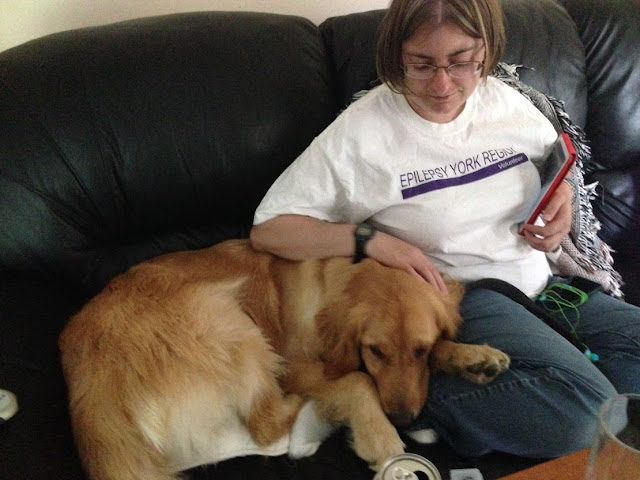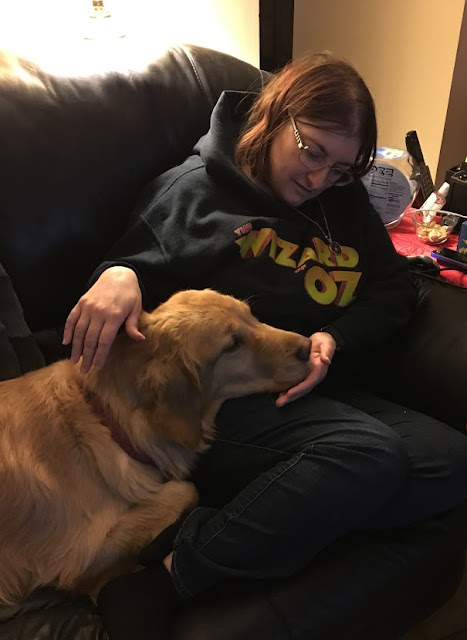Today is PURPLE DAY! Are you wearing your purple?
Purple Day is a Worldwide epilepsy awareness day that was founded by Cassidy Megan, and is celebrated every year on March 26th. Visit www.purpleday.org to learn more!
Today I will share information about alternatives to medication.
For about a third of the population, medication does not
control seizures. This condition is
referred to as having “refractory” seizures or “intractable” seizures. For these people, one option is neurosurgery.
We knew that her seizures began in the left occipital lobe, the area responsible for vision. This is actually a rare type of epilepsy. Amanda would see flashing lights or colours, and she often lost her vision for several minutes. She continues to have periods of temporary blindness today.
Once extensive pre-surgical testing was complete, we knew that she also had a second focus in the right parietal lobe. Parietal lobe seizures are also very uncommon. Seizures in this area of the brain can occur in clusters, happening frequently throughout the day. They can “cause sensory disturbances such as heat, numbness or electrical sensations, weakness, dizziness, hallucinations, distortions of space and other symptoms.” (https://www.hopkinsmedicine.org/health/conditions-and-diseases/epilepsy/focal-epilepsy) They can also result in “Todd’s Paralysis” which is a temporary paralysis during the post-ictal stage of the seizure.
In many cases, surgeons are able to isolate the focus
causing the seizures and remove it completely, allowing the patient
seizure-freedom.
In Amanda’s situation, they discovered that the first focus
in the occipital lobe went far deeper than anticipated and they could not
remove it entirely without leaving her completely blind. Her surgery drastically reduced her generalized seizures. Unfortunately, the partial seizures remained uncontrolled.
If you are interested in the brain, there is a picture
attached that shows Amanda’s brain with the occipital and parietal lobes
outlined for the planned surgery. If you
are squeamish, scroll past! Disturbing photos are marked "Warning: Graphic Image."
Medical knowledge and skills for epilepsy surgery are constantly improving. Technology has made a huge impact on what can
be done.
This article focuses on the areas of the brain affected in
Amanda’s situation. Seizures can originate in any part of the brain. To learn more about
epilepsy brain surgery you could investigate these links:
https://epilepsytoronto.org/about-epilepsy/learn-about-epilepsy/epilepsy-surgery/
https://www.uhn.ca/Krembil/Pages/epilepsy.aspx#Services
https://www.epilepsy.com/learn/treating-seizures-and-epilepsy/surgery/types-epilepsy-surgery
Warning Graphic Image:
This was an image taken of Amanda's brain during the grid mapping. The yellow outlines indicate the areas the surgeon planned to resect. He found more than he bargained for when he got inside. Dr. Rutka was her amazing neurosurgeon. She told him she loved his surgical cap so he gave it to her!
Her brother shaved his head in solidarity when Amanda was preparing for surgery.
Her stuffed bear went into surgery with her, and came out with the same bandages. Bless the nursing staff at Sick Kids. They are so good!
Receiving her medal of bravery.
Warning: Graphic Image
Just a few staples and stitches to close up...
And best of all, a visit from the PAWS Therapy dog, Blue.
There's nothing like a dog to raise your spirits!
Cute photo of Cable, just because.





























